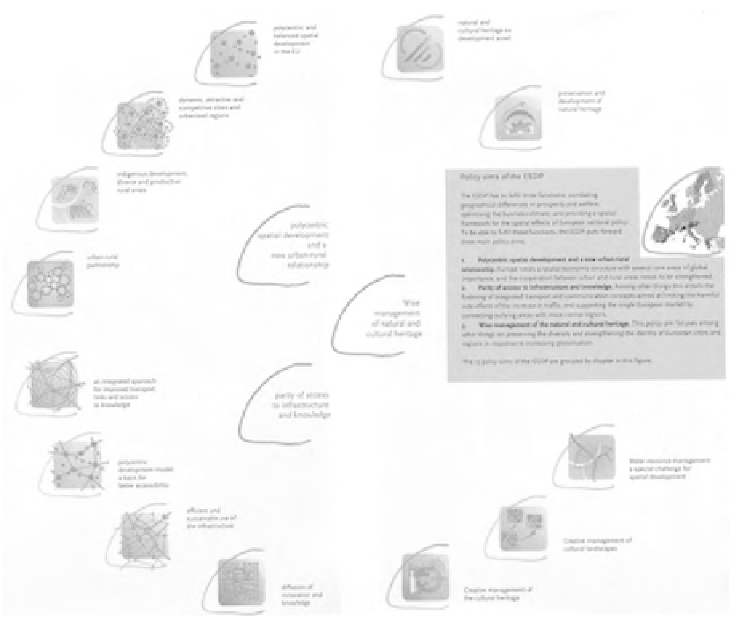Geography Reference
In-Depth Information
Figure 5.3
Summary of the thirteen ESDP policy focus areas
Source: CSD (1999); reproduced in VROM (2000: 54-55)
'post-ESDP' experiences will provide a more complete picture of 'mapping' in
transnational planning processes.
Many efforts have been made since the completion of the ESDP to define
and operationalise the concepts promoted in the document. The concepts, such
as 'polycentricity', are sufficiently vague to allow consensus, yet this also implies
that the concepts mean different things to different people and are interpreted and
used differently in different circumstances. Furthermore, their vagueness implies
that most policy options in the ESDP lack a spatial reference and merely express
general policy principles which cannot easily be depicted without further interpreta-
tion. Yet, although the ESDP process did not generate any policy maps, in the final
document there is mention of a spatial concept for the European Union. The 'pen-
tagon', one of the 'global economic integration zones' stretching between London,
Paris, Milan, Munich and Hamburg, which was identified in the ESDP text as the
area in which 50 per cent of the EU's total GDP is produced by 40 per cent of the
EU's population on 20 per cent of the total area (CSD, 1999: 8), has been con-
ceptualised subsequently by a German expert (see Figure 5.4).

